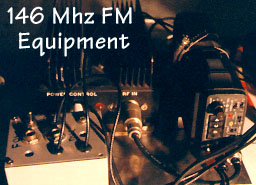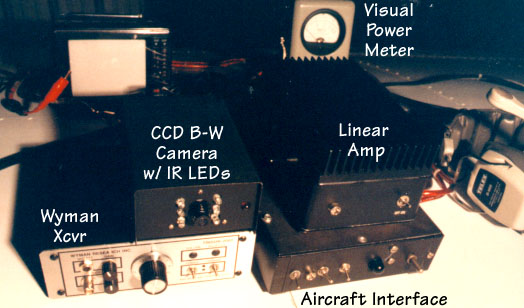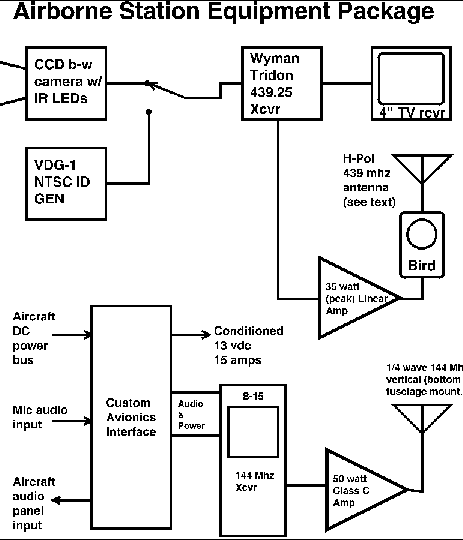
Voice communication is achieved with 50 watts, two meter FM on the
regional ATV voice coordination frequency of 144.34 mhz, with
occasional operation on 146.52 mhz. A Tempo S-15 transceiver with amp
and audio interface is shown. Not shown is the antenna; a quarter-wave
vertical whip projecting downward from the rear fuselage radiates a
nearly omnidirectional pattern.

Cockpit illumination is limited to the normal three watt red light
so as not to disrupt pilot night vision, but the six infra-red LEDs on
the CCD camera have proved more than adequate to show good instrument
panel detail. The pilot will sometimes use a penlite to make
adjustments, look at maps, etc... even though the video shows what
appears to be a normally lit scene - the camera sees the deep red light
better than the pilot.

